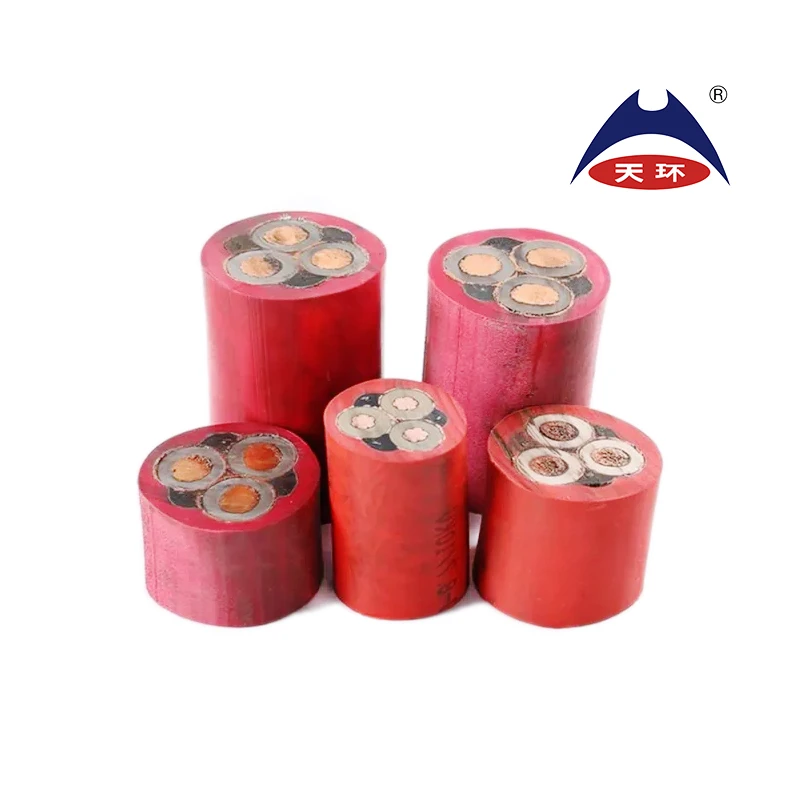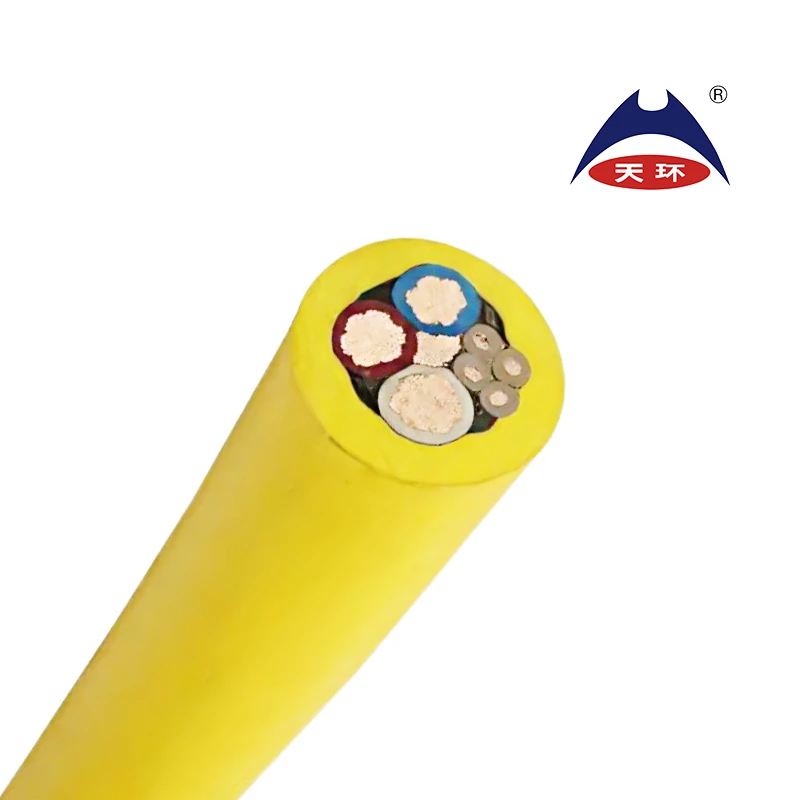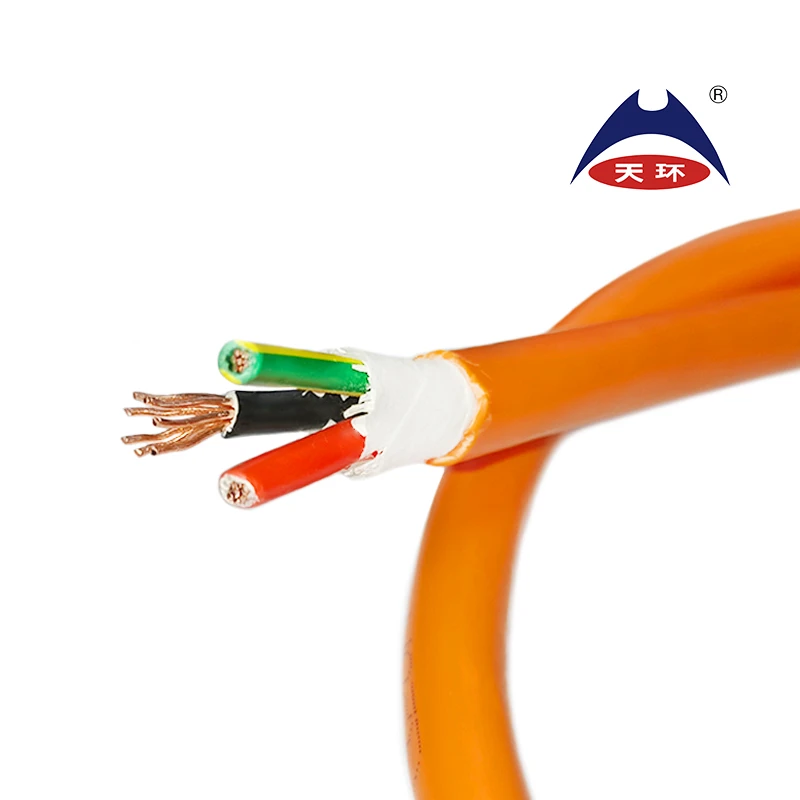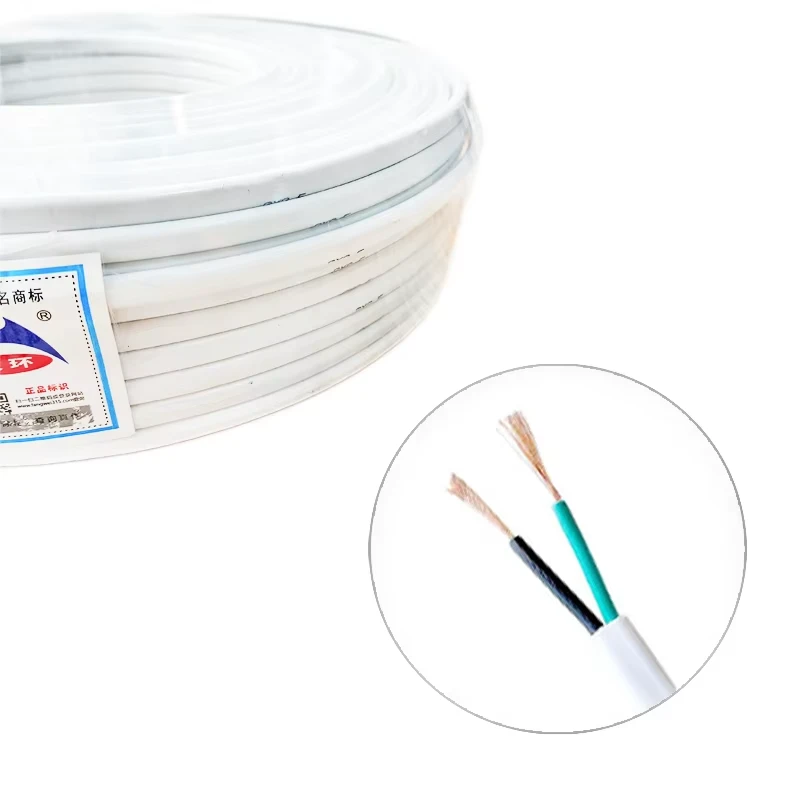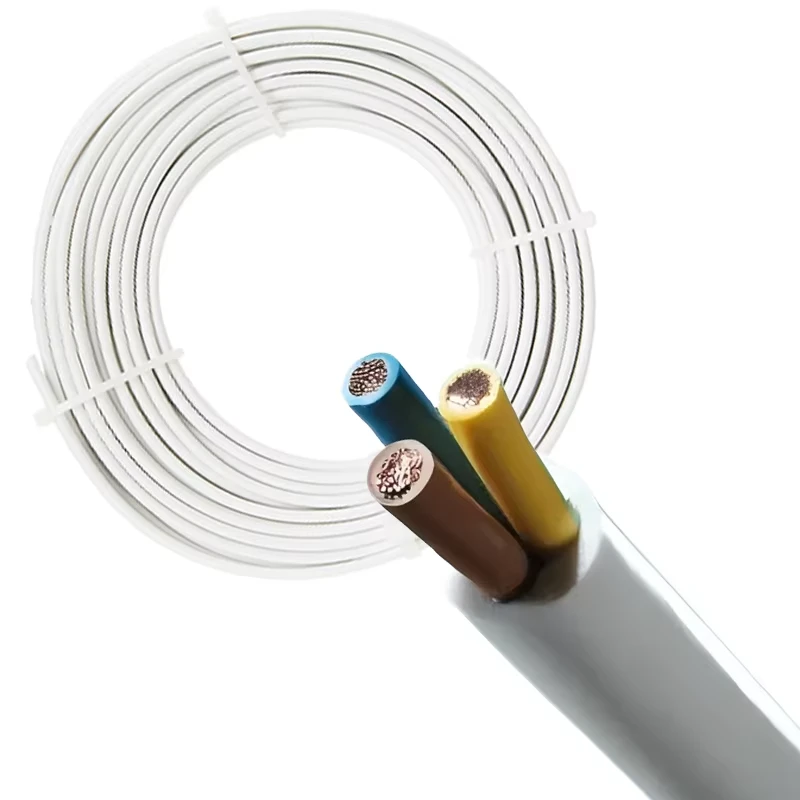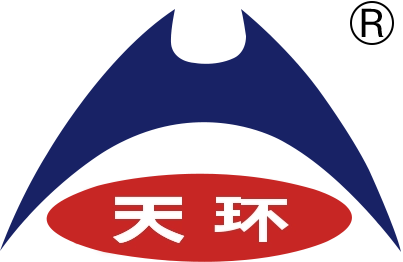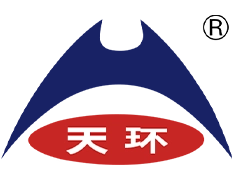
HSLH 300/500V Copper LSZH Control Cable - Safety & Performance
In the rapidly evolving landscape of industrial automation, smart infrastructure, and critical public safety, the demand for high-performance, resilient, and safe cabling solutions has never been more pressing. As technological advancements drive industries towards greater complexity and interconnectedness, the underlying infrastructure, particularly control cables, must meet increasingly stringent safety and operational standards. This detailed exploration focuses on a pivotal component in this infrastructure: the HSLH 300/500V Cu Conductors with Low Smoke Halogen Insulated and Sheath Control Cable, a product engineered to deliver unparalleled safety and reliability in the most demanding environments.
Industry Trends and the Imperative for Safer Cabling Solutions
The global control cable market is experiencing robust growth, driven by expanding industrial sectors, digitalization, and a heightened emphasis on fire safety regulations. According to recent market analyses, the global industrial control cable market size was valued at approximately USD 6.5 billion in 2022 and is projected to reach over USD 10 billion by 2030, growing at a compound annual growth rate (CAGR) of around 5.5%. This growth is significantly influenced by key trends:
- Automation and Industry 4.0: The proliferation of smart factories, robotics, and automated processes requires sophisticated control systems that rely on highly reliable data and signal transmission. Any compromise in cable integrity can lead to significant operational downtime and safety hazards.
- Stricter Safety Regulations: Post-disaster analyses (e.g., Grenfell Tower fire) have underscored the critical importance of Low Smoke Zero Halogen (LSZH) materials in public and industrial buildings. Regulations like the Construction Products Regulation (CPR) in Europe are pushing for higher fire performance classifications for cables, emphasizing reduced smoke opacity, flame spread, and corrosive gas emission.
- Environmental Consciousness: Beyond fire safety, there's a growing push for environmentally friendly materials. LSZH cables minimize toxic emissions during combustion, contributing to better air quality and reduced environmental impact.
- Infrastructure Development: Massive investments in energy infrastructure (renewables, smart grids), transportation networks (railways, metros), and data centers are fueling the demand for specialized control cables that can withstand harsh operating conditions while ensuring continuous performance.
Within this context, the HSLH 300/500V Cu Conductors with Low Smoke Halogen Insulated and Sheath Control Cable stands out as a critical solution, directly addressing these trends by providing superior fire safety, environmental responsibility, and operational reliability.
Technical Parameters: Unpacking the Specifications of HSLH Cables
The HSLH 300/500V Cu Conductors with Low Smoke Halogen Insulated and Sheath Control Cable is engineered to precise specifications, ensuring optimal performance and safety. HSLH refers to "Halogen-free, Self-extinguishing, Low Smoke."
- Conductor Material: High-purity annealed bare copper, typically class 5 flexible stranded conductors (IEC 60228), offering excellent conductivity and flexibility for ease of installation.
- Voltage Rating: 300/500V. This indicates the cable's design voltage. The U0 (nominal voltage between conductor and earth) is 300V, and U (nominal voltage between conductors) is 500V. This rating makes it suitable for a wide range of control, instrumentation, and signal applications.
- Insulation Material: Halogen-free, flame-retardant cross-linked polyethylene (XLPE) or a similar thermoplastic LSZH compound. This material ensures that in the event of a fire, it will not emit toxic or corrosive gases and will produce very low smoke levels.
- Sheath Material: Halogen-free, flame-retardant thermoplastic compound, specifically designed for low smoke and zero halogen properties. This outer layer provides mechanical protection and further enhances the cable's fire safety characteristics.
- Temperature Rating: Typically -30°C to +70°C for continuous operation, with a short-circuit temperature of up to +160°C. This wide operating range ensures reliable performance in various climatic and operational conditions.
- Core Configuration: Available in multiple core configurations (e.g., 2 cores, 3 cores, 4 cores, up to 61 cores) to meet diverse control circuit requirements. Cores are typically twisted in layers to minimize electromagnetic interference (EMI).
- Cross-sectional Area: Ranging from 0.5 mm² to 2.5 mm² for standard control applications, with larger sizes available for power distribution within control systems.
- Standards Compliance:
- IEC 60332-1-2: Tests on electric and optical fibre cables under fire conditions – Part 1-2: Test for vertical flame propagation for a single insulated wire or cable – Procedure for 1 kW pre-mixed flame.
- IEC 60332-3-22/24/25: Tests on electric and optical fibre cables under fire conditions – Part 3: Test for vertical flame spread of vertically-mounted bunched wires or cables – Categories A/C/D.
- IEC 60754-1/2: Test on gases evolved during combustion of materials from cables – Part 1: Determination of the amount of halogen acid gas evolved; Part 2: Determination of acidity (by pH and conductivity).
- IEC 61034-1/2: Measurement of smoke density of cables burning under defined conditions – Part 1: Test procedure and requirements; Part 2: Test procedure.
- RoHS & REACH Compliance: Ensuring the absence of hazardous substances.
Typical Product Specifications Table for HSLH 300/500V Control Cable
To provide a clearer picture, here's a typical specification table for a HSLH 300/500V Cu Conductors with Low Smoke Halogen Insulated and Sheath Control Cable:
| Parameter | Specification | Standard Reference |
|---|---|---|
| Conductor Material | Annealed Bare Copper, Class 5 Flexible Stranded | IEC 60228 |
| Rated Voltage (U0/U) | 300/500 V | IEC 60227-5 |
| Insulation Material | LSZH Compound (e.g., XLPE-based) | EN 50363-5 Type EI8 |
| Sheath Material | LSZH Compound (e.g., EM8) | EN 50363-6 Type EM8 |
| Operating Temperature | -30°C to +70°C (Fixed Installation) | |
| Short Circuit Temperature | +160°C (Max 5s) | |
| Minimum Bending Radius | 4 x Outer Diameter (Fixed) / 6 x Outer Diameter (Flexing) | |
| Flame Retardancy | Single cable: IEC 60332-1-2 Bunched cables: IEC 60332-3 (Cat. A, C or D) |
|
| Halogen Acid Gas Emission | Max 0.5% (HCl) | IEC 60754-1 |
| Acidity of Gases (pH/Conductivity) | pH ≥ 4.3; Conductivity ≤ 10 µS/mm | IEC 60754-2 |
| Smoke Density | Light transmittance ≥ 60% | IEC 61034-2 |
| Chemical Resistance | Good resistance to oils, acids, alkalis (depending on specific compound) | |
| UV Resistance | Optional (Special sheath compound) | |
| Typical Core Sizes (mm²) | 0.5, 0.75, 1.0, 1.5, 2.5 | |
| Number of Cores | 2 to 61 cores |
This table demonstrates the rigorous technical foundation of the HSLH 300/500V Cu Conductors with Low Smoke Halogen Insulated and Sheath Control Cable, highlighting its adherence to critical international safety standards.
Application Scenarios: Where Safety Meets Performance
The unique properties of HSLH 300/500V Cu Conductors with Low Smoke Halogen Insulated and Sheath Control Cable make it indispensable in a variety of critical application environments where public safety, equipment protection, and continuous operation are paramount. These include:
- Petrochemical Industry: In oil refineries, chemical plants, and offshore platforms, the risk of fire and explosion is inherent. HSLH 300/500V Cu Conductors with Low Smoke Halogen Insulated and Sheath Control Cable are used for process control, instrumentation, and emergency shutdown systems, where their fire-retardant and low smoke properties significantly reduce the dangers to personnel and equipment during an incident.
- Metallurgical Plants: Steel mills, aluminum smelters, and foundries operate at extremely high temperatures and involve hazardous materials. Control cables manage critical machinery and sensors. HSLH cables ensure safety in the event of overheating or short circuits, preventing the spread of fire and protecting sensitive electronic controls.
- Power Generation and Distribution: From power plants (nuclear, thermal, hydro, renewable) to substations and switchyards, these cables are vital for controlling turbines, generators, circuit breakers, and relay protection systems. Their reliability ensures grid stability and operational safety, especially in confined spaces where smoke accumulation could be disastrous.
- Public Buildings and Infrastructure: Airports, hospitals, tunnels, subways, shopping malls, and high-rise buildings require maximum fire safety. HSLH 300/500V Cu Conductors with Low Smoke Halogen Insulated and Sheath Control Cable are extensively used for fire alarm systems, emergency lighting, access control, and ventilation systems. In such environments, reducing smoke and toxic gas emissions is critical for safe evacuation.
- Marine and Offshore Applications: Ships, offshore rigs, and naval vessels demand cables that can withstand harsh marine environments and contribute to fire safety in enclosed spaces. HSLH cables prevent the rapid spread of fire and maintain visibility for emergency response.
- Data Centers and Telecommunication Facilities: With dense cabling infrastructure, the risk of fire and subsequent damage to critical data is high. HSLH cables protect servers, networking equipment, and power distribution units, minimizing downtime and data loss by limiting fire spread and corrosive gas damage to electronics.
In these diverse settings, the advantages of HSLH 300/500V Cu Conductors with Low Smoke Halogen Insulated and Sheath Control Cable—namely, its superior fire performance and robust construction—translate directly into enhanced safety, reduced operational risks, and greater system longevity. For instance, in a large-scale industrial facility, the cost of downtime from a cable failure or fire could run into millions per hour. Investing in HSLH cables is a proactive measure against such catastrophic losses.
Technical Advantages: Beyond Basic Connectivity
The core value proposition of the HSLH 300/500V Cu Conductors with Low Smoke Halogen Insulated and Sheath Control Cable lies in its advanced material science and manufacturing precision. Its primary technical advantages include:
- Superior Fire Safety:
- Low Smoke Emission: Unlike PVC cables which produce dense, opaque smoke during a fire, HSLH cables generate significantly less smoke. This crucial property maintains visibility, aiding safe evacuation and allowing firefighters to navigate more effectively. Test data (e.g., IEC 61034-2) typically shows light transmittance values of >60% for HSLH cables, compared to <20% for traditional PVC.
- Zero Halogen Content: Traditional PVC (Polyvinyl Chloride) cables contain halogens (chlorine). When burned, these release highly corrosive and toxic gases like hydrogen chloride (HCl). These gases are not only lethal but also cause severe damage to electronic equipment and building structures (e.g., corrosion of metal components). HSLH cables, free of halogens, prevent the emission of such gases, as verified by IEC 60754-1/2, ensuring pH values above 4.3 and conductivity below 10 µS/mm, indicating minimal acidity.
- Flame Retardancy: The insulation and sheath materials are designed to be self-extinguishing and resist flame propagation. This prevents the fire from spreading along the cable length, containing the blaze to its origin point. Compliance with IEC 60332-1-2 for single cables and IEC 60332-3 for bunched cables demonstrates this critical attribute. For example, in a factory environment with dense cable trays, this feature can prevent a minor electrical fault from becoming a widespread inferno.
- Enhanced Durability and Longevity:
- Mechanical Robustness: The LSZH sheath provides good resistance to abrasion, cuts, and impact, protecting the internal conductors from physical damage during installation and operation. This contributes to a longer service life, reducing replacement frequency.
- Chemical and Oil Resistance: While not universally oil-resistant, many HSLH compounds offer good resistance to various chemicals, oils, and greases commonly found in industrial environments, ensuring reliable performance even when exposed to contaminants.
- UV Resistance (Optional): For outdoor installations, specific HSLH compounds can be formulated to resist UV radiation, preventing material degradation and cracking over time.
- Environmental Friendliness: Beyond just fire safety, the absence of halogens and heavy metals (RoHS compliance) makes HSLH cables a more environmentally conscious choice throughout their lifecycle, from manufacturing to disposal. This aligns with global sustainability initiatives.
- Reduced Maintenance and Cost of Ownership: The inherent durability and safety features of HSLH cables lead to fewer failures, reduced need for emergency repairs, and minimized damage in the event of a fire. This translates to lower total cost of ownership over the cable's lifespan compared to cheaper, less resilient alternatives.
Manufacturer Comparison: Selecting the Right Partner
Choosing a manufacturer for HSLH 300/500V Cu Conductors with Low Smoke Halogen Insulated and Sheath Control Cable is not merely about price; it's about partnering with a company that guarantees quality, reliability, and support. Key factors to consider when comparing manufacturers include:
- Certifications and Compliance: A reputable manufacturer will possess comprehensive international certifications such as ISO 9001 (Quality Management), ISO 14001 (Environmental Management), OHSAS 18001 (Occupational Health and Safety), and product-specific certifications (CE, RoHS, VDE, UL where applicable). These ensure adherence to global standards throughout the production process.
- Research and Development Capabilities: Leading manufacturers continuously invest in R&D to innovate materials, improve manufacturing processes, and develop new cable solutions that meet evolving industry demands and stricter regulations. This indicates a forward-thinking approach and commitment to product excellence.
- Quality Control and Testing: A robust quality control system, including in-house testing laboratories, is crucial. Cables should undergo rigorous testing for electrical properties (resistance, insulation integrity), mechanical properties (tensile strength, elongation), and fire performance (flame propagation, smoke density, halogen content). Transparency in test reports builds trust.
- Production Capacity and Delivery Timelines: Assess the manufacturer's ability to meet your project's volume and schedule requirements. A reliable supply chain and efficient logistics are essential for large-scale projects. Our company boasts a significant production capacity, with an average monthly output exceeding 1000 kilometers of control cables, ensuring timely delivery for even the most demanding projects.
- Technical Support and After-Sales Service: Comprehensive pre-sales technical consultation, prompt after-sales support, and a clear warranty policy are indicators of a manufacturer's commitment to customer satisfaction. This includes guidance on installation, maintenance, and troubleshooting.
- Industry Experience and Track Record: A long history of serving diverse industries, coupled with a portfolio of successful projects and positive customer testimonials, speaks volumes about a manufacturer's expertise and reliability. For instance, our company has proudly served the industrial and infrastructure sectors for over two decades, accumulating invaluable experience and client trust.
Product Comparison: HSLH vs. Traditional PVC Control Cable
| Feature | HSLH 300/500V Control Cable | Traditional PVC Control Cable |
|---|---|---|
| Material Composition | Halogen-free compounds (e.g., XLPE, special thermoplastics) | Polyvinyl Chloride (PVC) |
| Smoke Emission (IEC 61034-2) | Very Low (Light transmittance > 60%) | High, Dense, Opaque (Light transmittance < 20%) |
| Toxic Gas Emission (IEC 60754-1/2) | Zero Halogen (No corrosive or toxic gases like HCl) | High (Releases toxic, corrosive HCl gas) |
| Flame Retardancy (IEC 60332) | Excellent (Self-extinguishing, limits flame spread) | Moderate (Can propagate flames, depends on specific PVC compound) |
| Corrosive Gas Impact | Minimal to sensitive electronic equipment and structures | Significant damage to electronics and structures due to acid gas |
| Environmental Impact | More environmentally friendly (RoHS, REACH compliant) | Contains halogens, less environmentally friendly upon disposal/combustion |
| Typical Cost | Higher initial cost | Lower initial cost |
| Application Suitability | Critical public/industrial areas, confined spaces, sensitive equipment | General purpose, non-critical applications, where fire safety is less stringent |
| Overall Safety Profile | Superior | Basic |
This comparison clearly illustrates why the initial investment in HSLH 300/500V Cu Conductors with Low Smoke Halogen Insulated and Sheath Control Cable, despite being higher, offers significant long-term benefits in terms of safety, property protection, and compliance.
Customization Solutions: Tailored to Your Project Needs
Recognizing that every industrial or infrastructure project has unique requirements, leading manufacturers offer extensive customization options for HSLH 300/500V Cu Conductors with Low Smoke Halogen Insulated and Sheath Control Cable. This flexibility ensures that the cable perfectly fits the specific application, optimizing performance and cost efficiency.
- Core Configuration: Beyond standard core counts, specific numbers of cores can be manufactured to match complex control systems, ranging from 2 cores for simple circuits to over 60 cores for intricate automation networks.
- Shielding Options: For environments with high electromagnetic interference (EMI), customization includes adding:
- Individual Pair/Triple Shielding: Aluminum foil/polyester tape with a tinned copper drain wire for enhanced noise immunity on specific signal pairs.
- Overall Screen: Braided copper wire or aluminum foil tape with a drain wire for collective electromagnetic protection of all cores.
- Outer Sheath Color and Marking: Specific sheath colors can be provided for visual identification or safety coding. Custom printing with project-specific markings, logos, or sequential metering enhances project management and traceability.
- Additional Resistances: Depending on the operational environment, the LSZH sheath can be formulated to offer enhanced resistance to specific factors:
- Oil Resistance: For applications in machinery with lubricating oils or cutting fluids.
- UV Resistance: For outdoor installations exposed to direct sunlight.
- Chemical Resistance: Against specific acids, alkalis, or solvents.
- Rodent Protection: Incorporating glass yarns or steel wire armor for areas prone to rodent damage.
- Mechanical Properties: Adjustments can be made to enhance flexibility for dynamic applications or increase tensile strength for vertical installations or long runs.
- Compliance with Regional Standards: While IEC standards are global, some projects may require compliance with specific national or regional standards (e.g., BS, DIN, UL, NFPA). A capable manufacturer can adapt designs to meet these diverse requirements.
Our engineering team works closely with clients from the design phase through to delivery, ensuring that every aspect of the HSLH 300/500V Cu Conductors with Low Smoke Halogen Insulated and Sheath Control Cable is optimized for their unique operational demands and regulatory landscape.
Application Cases: Real-World Impact and Success
The practical benefits of HSLH 300/500V Cu Conductors with Low Smoke Halogen Insulated and Sheath Control Cable are best illustrated through its successful deployment in various critical applications:
- Case Study 1: Modernizing an Urban Metro System's Signal Network
Challenge: An aging metro system in a densely populated city faced the challenge of upgrading its signal and control network. The existing PVC cables posed a significant fire risk in underground tunnels, where smoke and toxic fumes could easily trap passengers during an emergency. The project demanded a solution that met stringent international fire safety standards (e.g., EN 45545-2 for railway applications).
Solution: Over 500 kilometers of HSLH 300/500V Cu Conductors with Low Smoke Halogen Insulated and Sheath Control Cable, customized with an overall braided screen for enhanced EMI protection against railway traction currents, were installed. The cables were specifically chosen for their ultra-low smoke emission and zero halogen properties, crucial for maintaining visibility and breathable air in confined tunnel environments during an incident. The system now provides robust control for train movements, signaling, and platform screen doors, significantly enhancing passenger safety. Initial reports from emergency services confirmed that fire drills conducted with the new cabling infrastructure resulted in significantly improved evacuation times due to clearer visibility.
- Case Study 2: New Generation Data Center in a Financial Hub
Challenge: A global financial institution was constructing a Tier IV data center, requiring absolute reliability and the highest level of fire protection to safeguard critical servers and ensure business continuity. Any fire incident, however minor, could lead to catastrophic data loss and financial impact, exacerbated by corrosive gas damage to delicate electronic components.
Solution: All control and instrumentation wiring for HVAC systems, power distribution units (PDUs), fire suppression, and building management systems within the data center utilized HSLH 300/500V Cu Conductors with Low Smoke Halogen Insulated and Sheath Control Cable. The decision was driven by the cable's ability to prevent corrosive gas damage to sensitive IT equipment and maintain a smoke-free environment, crucial for emergency response and minimizing post-fire damage. The project manager reported that the choice of HSLH cables significantly reduced their insurance premiums due to the enhanced safety profile.
- Case Study 3: Upgrading a Petrochemical Plant's Process Control System
Challenge: A major petrochemical complex needed to upgrade its distributed control system (DCS) in a hazardous area. The environment was characterized by corrosive chemicals, potential for explosive atmospheres, and high temperatures, demanding cables with excellent resistance and fire performance to protect both personnel and high-value assets.
Solution: Customized HSLH 300/500V Cu Conductors with Low Smoke Halogen Insulated and Sheath Control Cable with enhanced chemical and oil resistance were selected for all instrumentation and control loops. The cables’ inherent flame retardancy and non-corrosive gas emission properties were critical in mitigating risks in areas where even minor electrical faults could escalate into severe incidents. The plant reported zero cable-related safety incidents after the upgrade, and routine inspections indicated excellent long-term performance even in challenging conditions.
These cases exemplify how the investment in high-quality HSLH 300/500V Cu Conductors with Low Smoke Halogen Insulated and Sheath Control Cable yields tangible benefits in terms of safety, operational resilience, and long-term cost savings, cementing its status as an essential component in modern critical infrastructure.
Crafting Excellence: The Manufacturing Process of HSLH Control Cables
The production of a HSLH 300/500V Cu Conductors with Low Smoke Halogen Insulated and Sheath Control Cable is a meticulous process, combining advanced engineering with stringent quality control at every stage. While I cannot display a live video or interactive diagram, the following steps outline the typical manufacturing flow:
HSLH Cable Manufacturing Process Flow Diagram (Conceptual)
[Copper Rod Drawing & Annealing] → [Conductor Stranding] → [LSZH Insulation Extrusion] → [Core Twisting / Cabling] → [Optional: Screening/Armoring] → [LSZH Sheath Extrusion] → [Spark Test & Final Testing] → [Marking & Packaging]
(Note: Actual process may include intermediate quality checks and specific material handling steps.)
Here’s a detailed breakdown of each critical step:
-
Copper Rod Drawing and Annealing:
The process begins with high-purity electrolytic tough pitch (ETP) copper rods. These rods, typically 8mm in diameter, are drawn through a series of dies to reduce their diameter to the required wire gauge (e.g., 0.5 mm² to 2.5 mm² equivalent). After drawing, the copper wires undergo an annealing process, where they are heated and then slowly cooled. This heat treatment softens the copper, removing internal stresses and increasing its flexibility and electrical conductivity, which is crucial for the cable's performance and ease of installation (Class 5 flexible conductors).
-
Conductor Stranding:
Individual annealed copper wires are then precisely stranded together using specialized stranding machines. This creates the multi-wire conductor, enhancing flexibility, strength, and reducing susceptibility to fatigue. The stranding lay length and direction are precisely controlled to meet IEC 60228 standards for flexible conductors.
-
LSZH Insulation Extrusion:
The stranded copper conductors are fed into an extrusion line. Here, a carefully formulated Low Smoke Zero Halogen (LSZH) compound (often a cross-linked polyethylene or a similar thermoplastic blend) is extruded over each conductor. This process forms the primary electrical insulation. Key aspects include:
- Material Selection: The LSZH compound is selected for its superior dielectric properties, thermal stability, and most importantly, its ability to release minimal smoke and no corrosive gases when exposed to fire.
- Precise Extrusion: The thickness and concentricity of the insulation layer are meticulously controlled to ensure uniform electrical performance and long-term reliability. Online laser micrometers ensure consistent dimensions.
- Curing (for XLPE): If a cross-linked LSZH compound (like XLPE) is used, a subsequent curing process (e.g., steam, dry, or radiant heat) transforms the thermoplastic material into a thermoset, improving its thermal resistance, mechanical strength, and resistance to chemical degradation.
-
Core Twisting / Cabling:
Once insulated, individual cores (single insulated conductors) are color-coded according to international standards (e.g., DIN VDE 0293). These cores are then precisely twisted together in layers or pairs (for screened types) around a central filler or core to form the cable's core assembly. This twisting helps to minimize electromagnetic interference (EMI) between adjacent cores and provides structural integrity to the cable bundle.
-
Optional: Screening and Armoring (if specified):
For applications requiring additional electromagnetic compatibility (EMC) or mechanical protection, further layers are applied:
- Overall Screen: An aluminum foil tape with a tinned copper drain wire or a braided tinned copper wire screen is applied over the cabled cores to provide collective shielding against external electrical noise.
- Inner Sheath: For multi-layered cables or those with armor, an inner LSZH sheath might be extruded over the screen to provide a bedding layer for subsequent armor.
- Armoring: Steel wire armor (SWA) or steel tape armor (STA) can be applied for enhanced mechanical protection against crushing or impact, common in direct burial or harsh industrial environments.
-
LSZH Sheath Extrusion:
The final stage of the primary manufacturing is the extrusion of the outer LSZH sheath. This protective layer encases all internal components, providing robust mechanical protection, chemical resistance, and the crucial low smoke, zero halogen properties. Similar to insulation, the sheath compound is carefully selected and extruded with precise thickness and concentricity.
-
Spark Test and Final Electrical Testing:
After the outer sheath is applied, the finished cable undergoes rigorous testing. A spark test is performed to detect any pinholes or flaws in the insulation and sheath. The entire cable length is passed through a high-voltage field, and any breakdown in insulation triggers an alarm. Subsequent tests include:
- Conductor Resistance: To ensure minimal power loss.
- Insulation Resistance: To verify the integrity of the dielectric.
- High Voltage Test (Dielectric Strength): To confirm the cable can withstand specified voltage levels without breakdown.
- Capacitance and Inductance: For signal transmission properties.
-
Fire Performance Testing (Batch/Type Testing):
Samples from each production batch, or type tests for new designs, undergo stringent fire performance tests in accredited laboratories as per IEC 60332, IEC 60754, and IEC 61034. These tests confirm the cable's flame retardancy, smoke density, and halogen acid gas emission levels.
-
Marking and Packaging:
Finally, the cable is marked with its product name (e.g., HSLH 300/500V Cu Conductors with Low Smoke Halogen Insulated and Sheath Control Cable), voltage rating, manufacturer name, and sequential metering marks. It is then wound onto drums or coils, ready for dispatch. Packaging ensures safe transportation and storage.
Throughout this entire process, adherence to international standards like ISO 9001 (for quality management) and ISO 14001 (for environmental management) is paramount. Each stage involves stringent quality checks, ensuring that the final HSLH 300/500V Cu Conductors with Low Smoke Halogen Insulated and Sheath Control Cable meets the highest standards for performance, safety, and durability, typically achieving a service life of 20-30 years in normal operating conditions.
Trust and Credibility: Our Commitment to Excellence
Building trust with our customers is at the core of our operations. Our commitment to delivering superior HSLH 300/500V Cu Conductors with Low Smoke Halogen Insulated and Sheath Control Cable is underpinned by several key factors:
- Industry Certifications: We are proud to hold ISO 9001:2015 for Quality Management, ensuring consistent product quality and customer satisfaction. Our environmental practices adhere to ISO 14001:2015 standards, reflecting our commitment to sustainable manufacturing. All our cables are designed and tested to meet international standards such as IEC, CE, RoHS, and often specific national certifications where required by projects.
- Established Track Record: With over 20 years of dedicated service in the cable manufacturing industry, we have cultivated extensive expertise and a deep understanding of diverse industrial and infrastructure needs. Our long-standing relationships with leading enterprises globally are a testament to our reliability and product excellence.
- Customer Feedback and Support: We actively solicit customer feedback to continuously improve our products and services. Our dedicated technical support team is available to provide comprehensive assistance, from pre-sales consultations on cable selection and customization to post-installation troubleshooting. "Our experience with their HSLH cables has been exceptional," says a senior engineer from a major European railway operator. "The product quality and the technical support far exceeded our expectations, especially regarding compliance with strict fire safety regulations for tunnels."
- Comprehensive Warranty and Service: All our HSLH 300/500V Cu Conductors with Low Smoke Halogen Insulated and Sheath Control Cable products come with a standard 5-year warranty against manufacturing defects, underscoring our confidence in their quality and durability. Our typical delivery lead time for standard products is 2-4 weeks, with expedited options available for urgent projects, ensuring your project timelines are met.
Frequently Asked Questions (FAQ) about HSLH Cables
To further enhance understanding and address common queries, here are answers to frequently asked questions about HSLH 300/500V Cu Conductors with Low Smoke Halogen Insulated and Sheath Control Cable:
- Q1: What does "HSLH" stand for, and why is it important for control cables?
- A1: HSLH stands for "Halogen-free, Self-extinguishing, Low Smoke." It is crucial for control cables, especially in public areas and critical industrial facilities, because in the event of a fire, HSLH cables significantly reduce smoke opacity, prevent the emission of toxic and corrosive halogen gases (like HCl), and limit flame propagation. This enhances safety for personnel, minimizes damage to sensitive equipment, and aids emergency response.
- Q2: What is the significance of the "300/500V" voltage rating for this cable?
- A2: The 300/500V rating indicates the cable's nominal voltage. 300V (U0) is the voltage between any conductor and earth (ground), and 500V (U) is the voltage between any two conductors. This voltage class is standard for control, instrumentation, and signal cables in low-voltage industrial and building applications, ensuring it can safely operate within these typical system voltages.
- Q3: How does the "Cu Conductors" part of the name impact performance?
- A3: "Cu Conductors" signifies that the cable uses copper (Cu) as the conductor material. Copper is preferred for control cables due to its excellent electrical conductivity, high thermal stability, superior mechanical strength, and corrosion resistance. Using high-purity, annealed copper ensures efficient signal transmission and long-term reliability.
- Q4: What specific inspection standards do HSLH cables comply with?
- A4: HSLH 300/500V Cu Conductors with Low Smoke Halogen Insulated and Sheath Control Cable typically comply with a suite of international standards from the International Electrotechnical Commission (IEC). Key standards include IEC 60332 (for flame retardancy), IEC 60754 (for halogen acid gas emission), and IEC 61034 (for smoke density). Compliance with these standards guarantees the cable's critical safety performance attributes.
- Q5: Can these cables be used outdoors or in harsh environments?
- A5: Yes, many HSLH 300/500V Cu Conductors with Low Smoke Halogen Insulated and Sheath Control Cable variants are designed for harsh environments. While the standard HSLH compound offers good general resistance, specific formulations can provide enhanced UV resistance for outdoor exposure, oil resistance for industrial machinery, or improved chemical resistance for specific corrosive atmospheres. It is crucial to specify the environmental conditions to the manufacturer for appropriate cable selection.
- Q6: What is the typical service life of an HSLH control cable?
- A6: When properly installed and operated within its specified temperature and environmental limits, a high-quality HSLH 300/500V Cu Conductors with Low Smoke Halogen Insulated and Sheath Control Cable can have a service life of 20 to 30 years or even longer. The use of robust LSZH materials, combined with precise manufacturing and quality control, contributes significantly to its longevity.
- Q7: Are there specific installation standards or best practices for HSLH cables?
- A7: While general electrical installation standards (e.g., NFPA 70/NEC, BS 7671, IEC 60364) apply, specific considerations for HSLH cables include respecting their minimum bending radius to avoid damaging the insulation/sheath, ensuring proper termination to maintain fire performance characteristics, and providing adequate support in cable trays to prevent stress. Always refer to the manufacturer's installation guidelines and relevant national/local wiring regulations.
The continued evolution of industrial and public infrastructure demands uncompromising safety and performance from every component. The HSLH 300/500V Cu Conductors with Low Smoke Halogen Insulated and Sheath Control Cable represents a pinnacle in this crucial domain, embodying the essential blend of advanced material science, stringent manufacturing quality, and unwavering commitment to safety. By mitigating fire risks, protecting vital assets, and ensuring operational continuity, these cables are not just components; they are critical safeguards for modern facilities.
As industries move towards more integrated and automated systems, the role of control cables becomes increasingly critical. The HSLH variant specifically addresses the growing regulatory push for safer materials in construction and industrial applications, making it a future-proof choice for engineers and project managers worldwide. Choosing the right cable is an investment in long-term reliability and, more importantly, in the safety of lives and property.
For further insights into cable technology and fire safety standards, we recommend exploring reputable industry resources:
- International Electrotechnical Commission (IEC) - https://www.iec.ch/
- Cable & Wire Fair Industry Forum - https://www.wire-tradefair.com/en/
- Journal of Electrical Engineering & Technology (JEET) - https://www.springer.com/journal/42835 (Look for articles related to cable insulation, fire retardancy, and material science.)
- Construction Products Regulation (CPR) Official Guidelines - https://single-market-economy.ec.europa.eu/sectors/construction/construction-products-regulation-cpr_en
-
Reliable LIYCY Cable Solutions for Low and Medium Voltage ApplicationsNewsJul.14,2025
-
Premium Overhead Electrical Wire Solutions for Low and Medium Voltage ApplicationsNewsJul.14,2025
-
Innovative XLPE Electrical Cable Solutions for Modern Low and Medium Voltage NetworksNewsJul.14,2025
-
High-Quality Ethylene Propylene Rubber Cable – Durable EPDM Cable & 1.5 mm 3 Core OptionsNewsJul.14,2025
-
Exploring the Versatility of H1Z2Z2-K 1X4mm2 Cables in Modern ApplicationsNewsJul.14,2025
-
Uses of Construction WiresNewsJul.14,2025
-
Types of Neoprene CableNewsJul.14,2025





